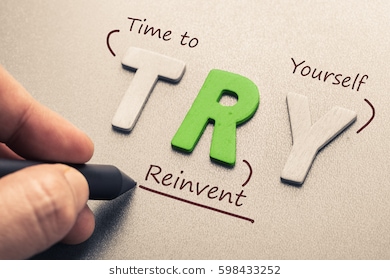 |
Ten Tips for Running Effective Meetings |
If there’s one thing we cannot buy, it’s time. Time is fleeting and it is important for us all to make the most of the time we are allotted. We all get 24 hours, but what we do with those hours is up to us. And this is why spending our time efficiently should be of utmost importance.
As entrepreneurs, CEOs and success-minded individuals, making the most of your day can have a telling effect on your career. Wasting or spending time frivolously can lead to loss of money, unfinished projects, work overload and hazardous work life. This is why setting up meetings is a top priority in success-minded organizations. Meeting to discuss, plan, analyze and execute projects in an organization has a direct impact on just how well it does. But with lack of proper conduct within those meetings, both your time and the success of your business are at stake.
This is why I’ve written out 10 effective tips for running a smooth meeting that will have the best impact on your operations and employees.
1. Come prepared
Preparation is a very vital key to success. The saying – “If you fail to prepare, you prepare to fail” may seem worn out, but that doesn’t mean it isn’t true. Prepare for each meeting with meticulousness and intention. Share the purpose of the meeting and send an e-mail 24 hours in advance to give the attendees time to prepare. Communicate the purpose, vital information as well as the people expected to be in attendance so everyone can show up and get the ball rolling.
2. Arrive 5 minutes early
Coming early has never been a bad idea. Stepping into the board room a good 5 minutes early gives you time to settle in and properly organize and go over your notes. This is especially important if you’re the one who called for the meeting or has a key role to play. Ensure everything is set – an adequate number of chairs, extra pens, a working projector, bottles of water for attendees and more so things run smoothly.
3. Start and end on time
A huge problem that usually occurs during meetings is exceeding the stipulated time. Starting on time is essential to not just the smooth sailing of that meeting, but making sure work resumes as intended. If your meeting is set for 9 AM, ensure you start at 9 AM (even if you only have 1 attendee). This will serve as a gentle reminder to attendees that may come late that your meetings always start on time.
4. No smartphones
Distractions can be very damaging to meetings. Time can be wasted due to repeated information, miscommunication and in all the purpose of the meeting could be defeated. Start by requesting that all smartphones be left outside the meeting. This will ensure that you have the full attention of those attending so you can pass across your agenda and come up with effective plans for the business.
5. Challenge ideas rather than people
If you have attended a couple of meetings before you know they can get pretty heated. Opinions start flying, blame gets allotted and sometimes feelings get hurt. The key to avoiding all this is to challenge the ideas and not the people. There is a thin line between rejecting an idea and making the generator of that idea feel rejected. The aim is to not cross that line.
How? When an idea is presented, address the idea, not the person. Be sure to acknowledge the idea positively, and then sight reasons why you think it won’t work. Also, ask others to chime in and share their thoughts on the idea presented. This way you might get a unanimous vote on why the idea is either good or bad and this moves the meeting along smoothly.
6. Stay on topic
Determining the focus and staying on course is another important aspect of an effective meeting. Prior to the meeting, have an outline set to ensure you know what you are discussing at each point in time. Leave room for comments, questions & answers and last minute additions. Ensure you have a good hold on what the topic is, and anything that doesn’t contribute to the current topic should be discussed after the meeting or at a later date.
7. Be brief and concise
Meetings have a tendency to be long-winded. When a meeting starts to take too long it starts to feel daunting and can affect the outcome of the meeting in general – attendees might lose track of key points, momentum can die down and it can affect the rest of the workday. Keep your meetings as short as possible and to the point. Cut out any and every irrelevant sub-topic. Leave issues involving just 1 or 2 individuals/departments for another time where you can have a smaller and more intimate meeting.
8. Share all relevant data
For your meeting to run effectively, it is important to share all relevant data prior to the meeting. E-mail all infographics, reports, e-mails, notes & documents before the meeting to ensure everyone is on the same page and will be able to follow the flow without problems. If there is any sensitive information that you mind sharing with everyone, note it during the meeting or reschedule a separate meeting for said information to be addressed.
9. Everyone participates
In order to get the best out of your meeting, ensure everyone participates. We all have something to bring to the table and it is important for you to give them the platform to do that. You never know, you might be missing an aspect of the topic that only one person has seen. Leave room for comments and observations and ensure there is equal opportunity for everyone to share their thoughts on the purpose of the meeting.
10. Follow-up by e-mail within 24 hours
Finally, ensure the minutes/notes from the meeting don’t stay in the board room. Send a brief summary of the topic, suggestions, strategies and plan of action to those concerned for recollection and actionable results. Ensure to do this within 24 hours to have top-of-mind priority and request that each recipient replies to acknowledge receipt.
With these 10 tips, any meeting will run smoothly and you will be able to get actionable outcomes and high-performance results.
Related Articles

|
What is Inflation and Why Must the Central Bank Fight Hard to subdue this Monster?A. What Is Inflation? - Inflation is one of the most frequently used terms in economic discussions, yet the concept is variously misconstrued. There are various schools of thought on inflation, but there is a consensus among economists that inflation is a continuous rise in the prices. Simply put, i [Read more]
|
Posted: 13 years ago |

|
Entrepreneurship Development Programme in Higher Education: A Nigerian PerspectiveEntrepreneurship education serves as a panacea to social economic problems. The present situation in Nigeria posed serious threats and challenges to both government and well-meaning citizens. These socio-economic problems call for different strategies and action for it to be ameliorated. Entrepreneu [Read more]
|
Posted: 3 years ago |

|
How to Reinvent Yourself To Be The Best You Can BeChange, they say, is the one thing that is constant. Change is the only thing that keeps happening, and it happens by the millisecond. However, since there are certain things we can’t stop from changing, like our age and bodies, there are things we wish we could change, but don’t know ho [Read more]
|
Posted: 7 years ago |


